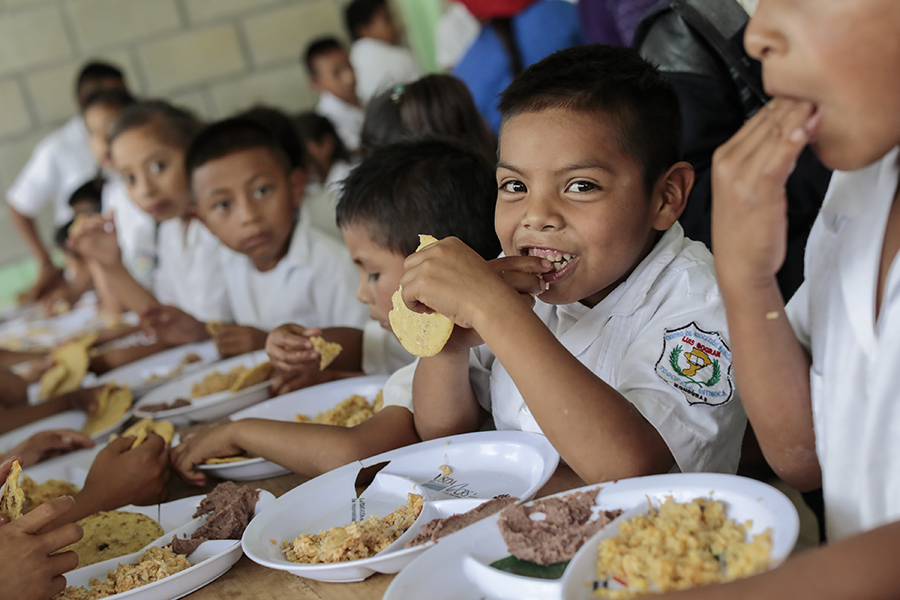
In the world of humanitarian work, few challenges are as pressing yet overlooked as child hunger in schools. The scale is staggering – UNICEF reports that when COVID-19 closed schools, 370 million children worldwide lost access to 40% of their in-school meals, highlighting just how many children depend on schools for their daily nutrition. Craig Williamson, founder of The Child Hunger Project (formerly the Craig Shawn Williamson Foundation), has spent eight years on the front lines of this crisis. What began with personally delivering pallets of rice and beans to schools in Costa Rica has evolved into a multi-country operation targeting one of education’s most fundamental challenges: ensuring children have enough to eat.
After nearly a decade of hands-on experience visiting over 55 schools in Costa Rica alone, Williamson brings unique insights into the complex web of bureaucracy, funding shortages, and systemic challenges that leave children hungry. His foundation’s mission to augment school lunch programs in impoverished areas has revealed startling truths about why schools run out of food and what can be done about it.
The scene repeats itself daily in schools across the world: children line up at the steam table, hoping there will still be food when they reach the front. Despite allocated budgets of $1.50-$1.60 per child in many countries, schools frequently need more food before every child is fed. For many of these students, this school meal represents their only food for the day.
The problem isn’t simply a matter of insufficient funding – it’s about how those funds get eroded along the way. Schools face impossible choices between paying for utilities and feeding children, with bureaucratic systems often prioritizing operational costs over nutrition.
What makes this situation particularly heartbreaking is that for many children, the meal they receive at school isn’t just lunch – it’s their primary source of nutrition. In numerous communities, public schools have been strategically placed in the poorest areas, where families rely on these school meals as a crucial lifeline for their children.
Williamson’s foundation has developed innovative workarounds to these challenges. When direct monetary donations are blocked by regulations requiring funds to go through education ministries (where only about 5% typically reaches the schools), they’ve found creative alternatives.
Instead of giving money directly, the foundation asks schools to order supplies from local vendors and send the invoices for direct payment. This ensures 100% of the resources reach their intended destination while complying with local regulations.
The foundation also shares success stories, like their recent work with Japanese agricultural engineers to create school gardens, providing a sustainable food source. Additionally, they’re exploring solar power solutions to help schools reduce utility costs and redirect those savings to food programs.
Perhaps the most encouraging development comes from the Bahamas, where a government breakfast program has achieved remarkable success in just one year. Working with the Prime Minister’s office, they’ve managed to feed 12,000 children in Nassau alone.
This success story demonstrates what’s possible when political will meets practical action. The program’s rapid growth and effectiveness serve as a model for other countries, showing significant progress is possible with the right combination of leadership and resources.
The Child Hunger Project is now working to help scale this model, offering their eight years of experience to help refine and improve the program while exploring ways to make it even more sustainable through initiatives like solar power and school gardens.
While the challenges of feeding children in schools worldwide remain daunting, Williamson’s work shows that persistent, creative action can make a real difference. Through a combination of direct intervention, innovative workarounds, and collaborative partnerships, The Child Hunger Project is proving that while there may not be a silver bullet solution to child hunger, there are countless ways to make progress.
As Williamson transforms his foundation into a donation-based platform, he maintains charities should operate like businesses, with profits channeled directly into their mission. This approach, combined with practical solutions and a willingness to adapt to local challenges, offers hope for a future where no child goes hungry at school.
The Child Hunger Project believes that everyone can be part of the solution. Curious about how you can become a Hunger Hero? Find more information here about how you can make a difference for children all over the world.

Millions of children across the globe suffer from hunger and malnourishment. It not only affects their physical health but also